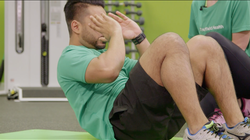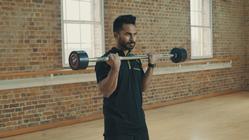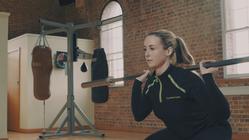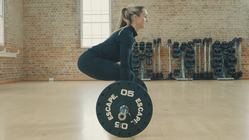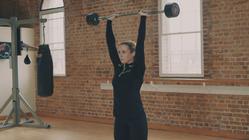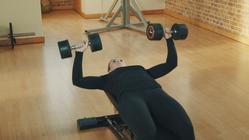Isolation versus compound exercises
- Overview
What's the difference between isolation and compound exercises?
Isolation exercises
Isolation exercises are those used to tackle one specific muscle group or joint ‘in isolation’. While in reality no exercise will only use one muscle group, isolation exercises specifically target one area. Although isolation exercises can be very simple, they are best used once you have built good over-all strength, so are typically used in more advanced training routines.
Compound exercises
Compound exercises use more than one joint or muscle group at the same time. They are suitable for beginners right up to elite level athletes and give the most ‘bang for your buck’ when weight training.
When should isolation exercises be used?
Isolation exercises will mostly benefit those with a good solid base of fitness, but some people who are new to the gym may find isolation exercises easier to do than compound exercises. It's better to use compound exercises to build good overall strength before attempting isolation exercises, but if you perform isolation exercises make sure that you balance it by training the opposing muscle group as well. For example: if you're going to do a leg extension, balance it by training your hamstrings with a leg curl to retain balance in the body.
When should compound exercises be used?
Compound exercise can be used at any stage of training and are suitable for all age groups and abilities. They should make up the majority of the training you do although you may benefit from some tuition on how to perform compound movements such as deadlifts and lunges correctly due to the more complex nature of them. Whether looking to improve athletic performance, increase your strength, lose weight or simply be able to stand and sit unaided compound exercises can help you.
Are isolation or compound exercises better?
Benefits of isolation exercises
Isolation exercises are mostly used in bodybuilding or for people rehabilitating from an injury or muscular imbalance. If you’re at an advanced stage of body training, then isolation exercises can provide more definition to a specific area. It can also help to target areas of the body that are overlooked in compound exercises (those that build strength in more than one group of muscles).
Best isolation exercises
- Dumbbell lateral raises
- Sit ups (crunches)
- Tricep kickbacks
- Bicep curls
Benefits of compound exercises
Compound exercises have a very long list of benefits, especially when compared to isolation exercises. By using several muscles together you are able to lift more weight which will lead to better increases in strength. Compound exercises can simulate real world activities such as standing, lifting, pushing, pulling and rotating and will help to improve your coordination and balance. They keep your heart rate up higher than isolation exercises due to using large groups of muscles together which will lead to improved fitness levels and the burning of more calories during the same time period. This makes compound exercises ideal for fat loss. Last but not least compound exercises are a fantastic way of improving sports performance and decreasing injury risk. When applied correctly they can improve speed, power and strength meaning you can run faster, jump higher and lift more weight with less chance of injuring yourself.
Best compound exercises
- Squats
- Deadlifts
- Military press
- Dumbbell chest press
Last updated Thursday 21 November 2019
First published on Tuesday 25 June 2019



